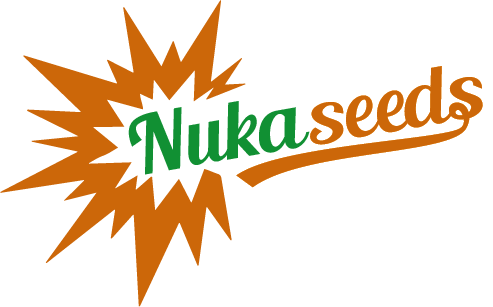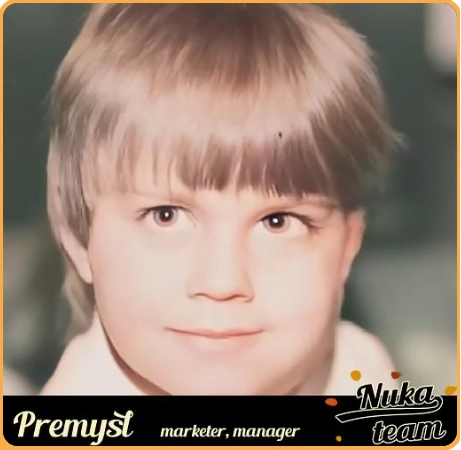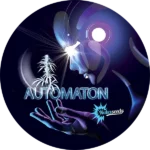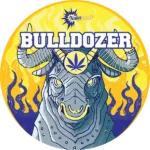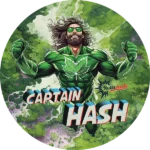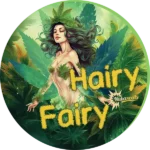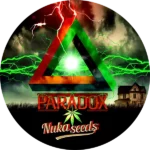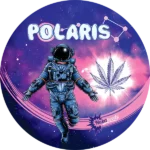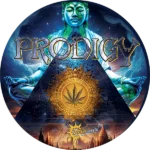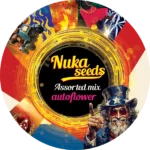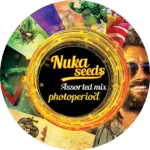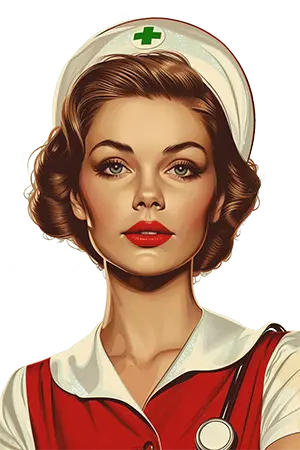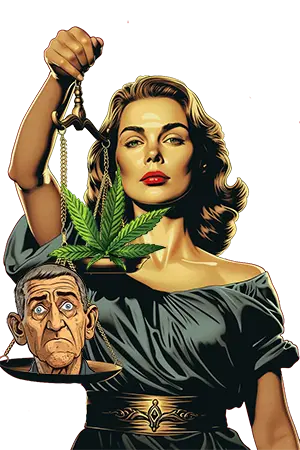English
First we will introduce one of the most respected scientists in the field of hemp research, then we will dive into the history and then you can read about the hemp extract called phoenix tears.
Lumír Hanuš has been working with cannabis since 1970. He is a biochemist of Czech origin and his work is of great importance for modern medicine to accept what has always been known. Namely, that cannabis can rightly be considered a panacea.
Professor Hanuš was involved in research into endogenous cannabinoids and managed to isolate the substance anandamide, which binds to the cannabinoid receptor.
Anandamide is either a neuromodulator or a neuromediator. It is a molecular “messenger” that plays a role in pain, anxiety, appetite, memory and fertility. It is also involved in the regulation of synaptic transmission (the transfer of information from one cell to another).
But people have become so deluded by anti-drug propaganda that even the simplest things have to be explained over and over again. The brainwashing has really worked – otherwise this most useful and medicinal plant in the world could not be so systematically combated.
The history of cannabis use
The earliest (though not fully confirmed) findings of cannabis come from southern Moravia in Czech Republic, dating back to the Palaeolithic period 26 000 years ago. Negative fibre impressions have been found. The plant material has not been preserved, but since it was known from the pollen grains that hemp was already growing in Moravia at that time, it can be assumed that it was either hemp or nettles. If better quality prints are found, it will be possible to determine exactly which plant was involved, and this would be the earliest evidence of cannabis.
However, it is confirmed and recorded on papyrus that hemp was used as a spinning plant in China as early as 6000 years ago. The first known record of cannabis being used as medicine dates back to the reign of Emperor Chen Nung 4,700 years ago – and even then it was used for malaria, constipation, rheumatic pains, distraction and female disorders. Objects from the grave of a shaman from 4,500 years ago have been found with hemp leaves and seeds. The presence of cannabis in the shaman’s hair has not been proven, but it can be inferred that it was used in shamanic rituals and therefore probably in healing.
In Assyria, a library of clay tablets with pharmacopoeia survives from 3000 to 2000 BC, showing that the most important plants for healing were poppy and hemp. They used different names for cannabis depending on its use – gurgurru for hemp ropes and cordage, quunabu for cannabis used in religious ceremonies, azalla for cannabis used for neurological diseases, and gan-zi-gun-nu, which meant “the drug that takes your soul…”
In Egypt 3,700 years ago, cannabis was called shm-shm-tu. In the Ebers Papyrus of 1500 B.C., there is a reference to “cannabis crushed in honey and put into her vagina” and a treatment for inflammation of the fingernail. In India, the Atharva Veda literally says that ‘cannabis protects one from disease and prolongs the years of life we have ahead of us’. Cannabis was held in high esteem then and was known to be a medicinal plant. Pliny the Elder in 79 AD wrote of cannabis as an analgesic for the treatment of stiff joints and gout. Around the same time (AD 90), Dioscorides also mentioned the effects of soaked hemp root against joint pain and gout: ‘When the soaked root is placed on inflamed joints, it soothes them, removes the swelling and dissipates the stiffness in the inflamed joints.
Cannabis use versus science
If cannabis has medicinal properties, logically it should have medicinal uses. In the first place, Mr Hanus mentioned the bronchodilator effects (that cannabis dilates the bronchial tubes and makes it easier to breathe). It provides temporary relief from asthma attacks.
It effectively treats asthma, hay fever, breathing difficulties and all throat diseases, colds, cold sores and bronchial irritation. It is not recommended for children under six years of age.
There it is again – the magic circle. “Scientifically unproven…” Such arguments will defend the spread of the use of cannabis and other traditional and non-traditional treatments for many years to come. (In the interests of fairness, it should be added here that Professor Kršiak has to stick to the scientific results in his opinion and basically has no room for expressing his opinions or the experiences of individual patients.
If it is not “proven”, studies should be initiated immediately to “prove” it. It won’t be such a problem. We can immediately suggest a number of topics. There is so much money being wasted from the state budget that some savings could be found to pay for it. For example, from the money that is perversely spent on preventing children from using cannabis.
Perhaps even the mere (dis)cost of treating the experimental group would cover this. If we take a hundred people for whom we do not pay $140,000 a month (this may be the cost of one dose of so-called biochemotherapy, a new method that is supposedly only given to people under 40 in our country – it used to be under 45, now there is no money, so under 40 – hello all forty-one year olds), we have $14 million for research right away, $168 million a year. For a hundred people who cure themselves every month in the warmth of their homes, without having to experience hospital order. If decision-makers really want to protect our health and doctors are not working with the oldest, safest and probably most effective medicine, something is wrong.
Examples of the use of cannabis in medical treatment

Antiemetic effects (anti-vomiting) – cannabis is 100% effective for this, it has been tried on 600 children in Israel and is now commonly used. Cannabis also stimulates the appetite, which can be used preferably by people who are sick and have no appetite and whose bodies are decaying.
They then gain weight, which helps in the fight against illness. For example, in the palliative treatment of anorexia caused by opiates, anti-viral drugs or AIDS-related illnesses or advanced stages of cancer;
analgesic effects (pain relief) – e.g. for cancer or post-operative pain. It also successfully relieves phantom pains (e.g. finger pain in amputated limbs, etc.);
significant antibacterial effects;
muscle weakness, spasmodic spasticity – e.g. in multiple sclerosis, cerebral palsy or spinal cord injury;
glaucoma – i.e. high intraocular pressure that affects the nerves, leading to loss of vision. Cannabis reduces this pressure; anticonvulsant effects – e.g. in epilepsy;
bone marrow transplantation; bone remodelling; post-traumatic pain;
musculoskeletal disorders – Huntington’s disease, Parkinson’s disease, Tourette’s syndrome, involuntary movements;
Anti-inflammatory effects (competitively inhibits acetylcholinesterase and prevents its induced accumulation of b-amyloid);
in Alzheimer’s disease or rheumatoid arthritis;
neuroprotective effects – use in head injuries. It restores any impaired function more quickly, e.g. in head injuries or stroke – here it is important to administer cannabis within the first three or four hours – it prevents swelling and other damage. The idea that cannabis should be in every ambulance is not entirely wrong.
It’s all to do with the CB1 and CB2 cannabinoid receptors. CB1 receptors are found in the cerebral cortex, hippocampus, basal ganglia, cerebellum and affect the reproductive system. CB2 receptor is found in the lymphoid organs: spleen, thymus, tonsils, bone marrow, pancreas, macrophages, leukocytes.
Endocannabinoids affect e.g. the following physiological systems and conditions: pain, movement, appetite, eating, blood flow through the brain, immune system, reproduction, blood pressure, stress, mood, bone formation, vomiting/vomiting, anxiety, neuroprotection, inflammation, memory, digestive tract. Three typical effects after smoking marijuana include: appetite stimulation, elimination of anxiety, calming.

This is due to the presence of cannabinoid receptors in the hypothalamus and limbic system (the latter is responsible for emotional behaviour and is where the roots of fear, aggression, desire and pleasure lie). Endocannabinoids seem to have a general function as stress relievers. The endocannabinoid system could have therapeutic use in the treatment of diseases associated with inappropriate retention of unwanted memories or inappropriate responses to unwanted conditions such as post-traumatic stress disorders, anxiety states and some forms of chronic depressions.
Rick Simson
Years ago, he figured out how to use cannabis extract to treat cancer, diabetes, chronic pain, infections, inflammation, burns, ulcers, warts, moles, migraines, asthma, anxiety, paranoia, depression, insomnia, scars, psoriasis, glaucoma, high blood pressure, multiple sclerosis, and many other diseases.
It doesn’t take much, just take half a kilo of the best quality cannabis. We have a great variety of Megaton which is absolutely perfect for production (technical or rather medical grade gasoline, isopropyl alcohol, petroleum ether), grind and stir it for two or three minutes, drain, pour again and repeat the process. The resulting liquid is poured into a rice cooker, onto which a running fan is directed and evaporated. Towards the end of the evaporation process, a few drops of water are added to release the solvent residue. Then it’s poured into a smaller cup and put on a coffee heater, a radiator, for a couple of hours to finish evaporating. He made all this information public and made it known to all the institutions involved. But of course, nobody lifted a finger. Unless it concerns yourself or your family, you don’t really care. So does the system really want to do something for the people
The cost of growing a field of hemp is the same as the cost of growing a field of corn. However, unlike genetically modified corn, hemp from a single field can cure thousands of people of cancer, multiple sclerosis, asthma, dementia and Alzheimer’s disease. But it can also be used for a lot of ailments that we don’t even know about today. It has no harmful side effects that can justify it being banned.
Run from the cure, a documentary about phoenix tears
Whether or not people want to take a plant should be their own decision in the first place. The government has no right to dictate whether or not cannabis is used. The plant has always grown here and always will. Their noble concerns about someone accidentally hurting themselves and about children accidentally ‘using cannabis’ should be thought through to the end, weighing up the benefits against the losses.
Ten percent of people have what is called an addictive personality and will form an addiction to virtually anything. However, cannabis is known to be non-addictive and does not form an addiction.
One of the main topics of Rick’s lectures was the treatment of cancer with cannabis extract. Rick is a big opponent of chemotherapy and has many reasons for this. One of the major ones is that it is poison and corrosive.
It is a completely natural part of the human food chain and you can’t get anything better on this planet – hemp seed, for example, is an optimal source of the essential unsaturated acids omega 3, 6 and 9 and protein. Four litres of ethanol can be produced from hemp for around ten crowns. Hemp fibre has enormous tensile strength and durability. It can be used to make over fifty thousand products, from ropes to lace. Hemp shives (the shreds left over after the fibres have been removed) contain 70 % cellulose and can be used to make over twenty-five thousand products, from dynamite to cellophane. The production of paper and textiles from hemp does not require the use of toxic chemicals. Hemp paper could replace all paper consumption – and not a single tree would have to be cut down for paper mills.
Radiation is also used to treat cancer. It also produces interesting and poorly healing results. That these methods are still used is more or less a wonder. Professor Hanus also pointed out that they are considered outdated and obsolete in the medical world, but they are still used. Even when it is known that they do not work for a given type of cancer (e.g. lung). Linus Pauling, a two-time Nobel Prize winner, wrote years ago that “everyone should know that most cancer research is a sham and that large cancer research organisations are neglecting their duties to the people who support them”.
The facts about the failure rate of these treatments are no secret either; for some cancers the success rate is a paltry 15 percent and oncologists often count in days, weeks or months (and this is often considered a miracle). But even with a so-called successful cure of the tumour, there is no reason to rejoice. According to Samuel Epstein, “chemotherapy and radiation can increase the likelihood of cancer recurrence by up to 100 times”. Not to mention that surviving patients usually get diabetes, and treating the effects of these methods is not a matter of days or months.
With every dose of chemotherapy you poison every organ in your body. Rick has had many cases of people who have successfully cured their cancer and had it confirmed by doctors. But after a few months they got sick, went to the hospital, where of course they were checked first of all to see if the cancer had come back. But it didn’t. They died only from the chemotherapy and radiation. That’s why he tells everyone who has had a lot of chemo and radiation not to stop taking the extract after the first 60 gram dose. They may have to use two or three doses before all the damage from the previous “treatment” is removed.
But fortunately, even in the world of medical professionals, there are bright exceptions who do not turn a blind eye to the findings of cannabis extract. But even they still have to follow the regulations…
The extract can be made cheaper than aspirin. So why are people still dying needlessly? No one doubts that doctors can fix you up after a car crash. But when it comes to serious illness, their success rate plummets. If you’re diagnosed with a serious form of cancer today, your chance of surviving five years is barely three per cent.
Rick’s outrage is hardly surprising. It’s hard for him to understand how someone who makes a living giving chemotherapy to children while knowing that he is actually killing them can put up with himself. The dangers of the drugs he uses are not lost on him either. He explains this by giving the example of putting a bucket of cannabis extract in front of you and another of aspirin and putting a spoon in your hand. Even if you eat all the extract in front of you, you will survive. You might have long sleep , but you’ll survive and it won’t do you any harm. But how much aspirin do you eat like that? One or two tablespoons and you’re dead.
Equally interesting are the results of the so-called legal dose 50 test, which is the standard test for all drugs. It’s done by taking a group of mice and gradually increasing their doses each day until half of them die. In experiments with cannabis extract, the researchers failed to kill a single mouse, even though they increased the doses to almost unbelievable levels. There is no safer or more effective medicine on the planet. Shouldn’t doctors be working for us rather than big pharma lobby?
Once you see what wonders this plant can do, you won’t understand why anyone would or would want to take chemical drugs.
Fifty years ago, you went to the doctor, he gave you some medicine that you took for a month, and that was it. Today they give you a drug that has some side effects that have to be dealt with again with another drug. And so you gradually get into a spiral, and before you know it you’re eating six or eight different pills a day.
But let’s not forget that we are all different. No two people are the same. So a doctor can never know in advance what a combination of prescribed drugs will trigger. It’s the same with chemotherapy – if two people have exactly the same cancer and receive exactly the same chemotherapy, they may react very differently to it. Basically, it’s just a matter of how tolerant we are to the poisons. Someone goes through twenty doses and their hair doesn’t fall out, another may die on the first dose. Don’t the doctors know that? Personally, I wouldn’t give radiation or chemotherapy even to a dog. What they’re doing is murder, plain and simple. And it has to stop. And it’s up to us to make it happen.
In Canada, someone dies of cancer every eight minutes. No matter who you are, the death of a loved one will always mark you and take a piece of you. The trouble with current cannabis activities is that they are mistakenly focused on getting cannabis under control, legalizing and taxing. So they’re going to deny us cannabis for decades and leave us to die and now they want to tax it? They won’t get a penny from us, they can be sure of that, says Rick.
Rick tells everyone not to believe a word he says and to try it for themselves. All they need is thirty grams of quality cannabis, which will make three to four grams of extract. Then they find someone with skin cancer, rub it on them and see what happens. If what they see isn’t a cure for cancer, what is it?
Did your parents ever tell you that a poison might be good for you? Or radiation? I don’t think any sane person could tell you that. But the sad truth is that doctors themselves often refuse to undergo these treatments. It’s just planned murder and madness that must end.
Many people with arthritis, diabetes or terminal cancer come to see Rick. The arthritis usually goes away within a month, they stop injecting insulin within six weeks when their pancreas starts working again, and the cancer usually goes away within ninety days. Great results have been achieved with Leuger’s disease, Crohn’s disease and multiple sclerosis, for example. It depends very much on when the treatment is started with multiple slerosis. The sooner the better. Freshly diagnosed patients with multiple sclerosis can be cured relatively quickly, but it takes longer for patients who are already damaged by the effects of the disease. But it is possible.
How to take the extract ? We’ll let Rick explain
“Start with a really small drop three times a day – in the morning, sometime in the afternoon and then an hour before you want to go to bed. You put the drop on your finger, roll it against your bottom teeth, wash it down with a little cool drink, and a ball forms in your mouth, which you swallow. The rest can be smeared over the gums. After four days, increase the dose to a drop the size of a grain of rice. Then after four days to two grains of rice. Then three. Within five or six weeks, people are usually able to take a gram of extract per day, about a third of a gram three times a day. They can then stay on this dose until they are cured. But if you have a serious form of cancer, for example, you should use the required dose as quickly as possible. It is literally a matter of flooding the body with THC.
Health professionals could easily inject the extract directly into tumours. They’ve been doing it on experimental animals for years, but human trials must be scary. Why, it’s not clear to me. If they’ve got people in the hospital who are going to die anyway, what exactly are they after?
In our experience, the hemp extract can replace almost all pharmaceuticals and solve almost all health problems

I usually tell people starting treatment to count on the extract to lower their blood pressure. So if you are taking any pills to lower your blood pressure, it could drop too low. At the beginning of treatment, people should check their blood pressure and not take any other medications that they don’t necessarily need to take.
In the beginning, the main side effect of the extract is sleep. People just sleep a lot and well after taking it. But within three to four weeks, daytime fatigue usually disappears and everything returns to normal.
I recommend that anyone starting treatment wait to drive until they get a little used to the extract and get comfortable with it. Once you get used to it a bit, it will not impair your motor skills in any way and you will have no difficulty driving. Anyone can drive on the extract, it just takes some getting used to. However, I do not encourage this because the police are often intransigent and if you encounter an over-motivated policeman they may ban you from driving again.

We have not found any negative or risky aspect of using cannabis extract. When I first started years ago, I used to be terrified that I might kill someone with it. You were full of all the lies we’d been served since we were young. Like avoid cannabis if you’re predisposed to schizophrenia. This is utter nonsense, I’ve treated dozens of schizophrenics and the extract has a fantastic effect on them. Plus look at the numbers of schizophrenics forty years ago twenty years ago and now. They don’t differ much. But the number of people actively using cannabis has increased maybe a thousandfold in that time. I guess we’d have to have more schizophrenics if the marijuana and schizophrenia thing were true…
I don’t like the word marijuana. It’s a term with racist overtones that came into use to confuse the public. Everybody knew cannabis, nobody knew marijuana. That’s why they were able to get their bans and laws passed. The people involved in that famous ninety-second debate on the “marijuana prohibition” bill didn’t even know what they were talking about or deciding at the time. “They want to ban a kind of marijuana. I don’t even know what that is, so they should just ban it.” It was only after the meeting that they found out they had actually banned hemp, one of the most common and important agricultural crops at the time.
Cannabis has really been with us for centuries or millennia. Even George Washington grew it. In one letter, he writes that he separated the males from the females too late…
Dr. Bob Melamede, for example, says that hemp cannot cure tuberculosis. I don’t believe that. The way it helps with lung problems, it just doesn’t sit right with me. Plus, I was told about the Hemp as Medicine study from the 1950s, where they treated tuberculosis with just hemp seeds. So it needs to be researched and some evidence needs to be obtained. But even if it doesn’t work for tuberculosis, so what? Then we will know it doesn’t work for it, but we will still have countless other uses. Even if it’s just for diabetes.
For lung cancer, I recommend that people smoke cannabis from a vaporizer in addition to the extract. Just one or two puffs a few times a day. This way the cancer is attacked both directly in the lungs by smoking and from the bloodstream, greatly enhancing the effect of the treatment.
Of course, there are certainly other ways of treating cancer. But the question is what other side-effects they have (usually tremors and nausea) and whether chemicals are used in them. Cannabis extract, according to our findings, is the least pernicious method of cancer treatment and is definitely the biggest “cancer killer” on the planet.
As a maintenance dose after curing cancer, I usually advise taking six to twelve grams of extract per year. Just two or three or four drops a week, maybe at bedtime. Of course, it would probably be best to take, say, a gram a month, but for most, even half a gram of extract would probably be enough.
But I would still recommend one sixty gram dose to all people in their forties and fifties. To simply use it as if they had terminal cancer. It will “reset” their body, detoxify their system and return them to their natural weight.
Another hot topic is vaccines. If you are considering getting a flu vaccine, consider it well. It’s a very dangerous gamble. You can find a lot of information on Rebecca Carley’s. If you are worried about the flu, make sure you get a cannabis extract instead. You won’t find a more effective flu remedy anyway. Let’s not even talk about so-called cancer vaccines.
I’ve only had the flu twice in the last five years. When it starts to “creep up” on me, I deal with it very simply – as soon as I feel the first signs of a scratchy throat or cough, I just put the extract on a spoon, smear it on the back of my tongue and rub it in. Then the cough doesn’t break out. You may feel the flu a little in your head, but it won’t do any harm to your body. I’m not saying it’s a cure for the flu, but it can help with it very effectively.
Always try to make your extract from the best quality cannabis you can get your hands on. You won’t save any money if you buy lower quality cannabis – you’ll just make less extract, which won’t be as good. The way I do it, I only charge people for the cost of the work. If they bring their own cannabis, it doesn’t cost much. If I have to buy it for them, they have to pay for it. I can’t finance it, that’s understandable.
Still, I wonder how governments will explain this to people when cannabis is allowed and made available to all. After all the lies, they won’t have it easy. But that’s their problem. I just feel and know I’m doing the right thing. If people don’t respond to that, that’s their business. It’s their life, after all. It’s not my job to push this medicine at all costs and force it on everyone. I’m simply trying to lead a horse to water. Whether they drink it is up to them.”
Published by Kotelnik
15/03/2022choose and buy cannabis seeds from our offer
our pleasure
